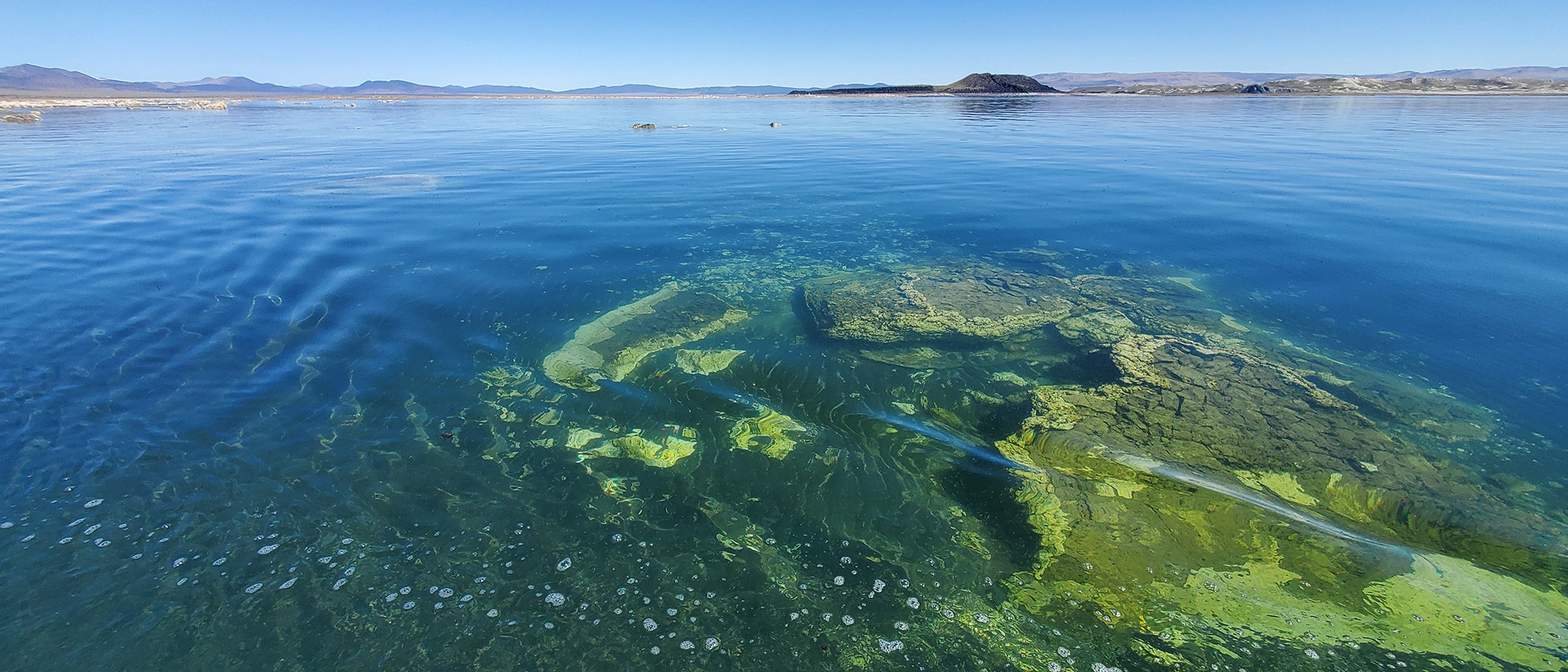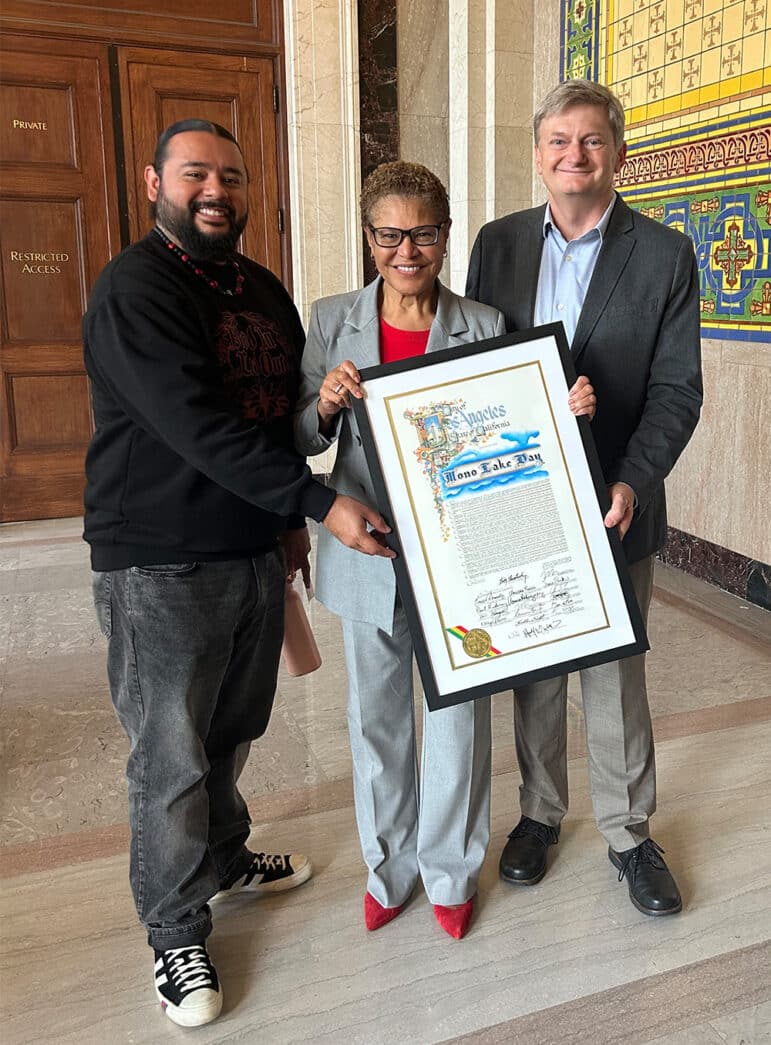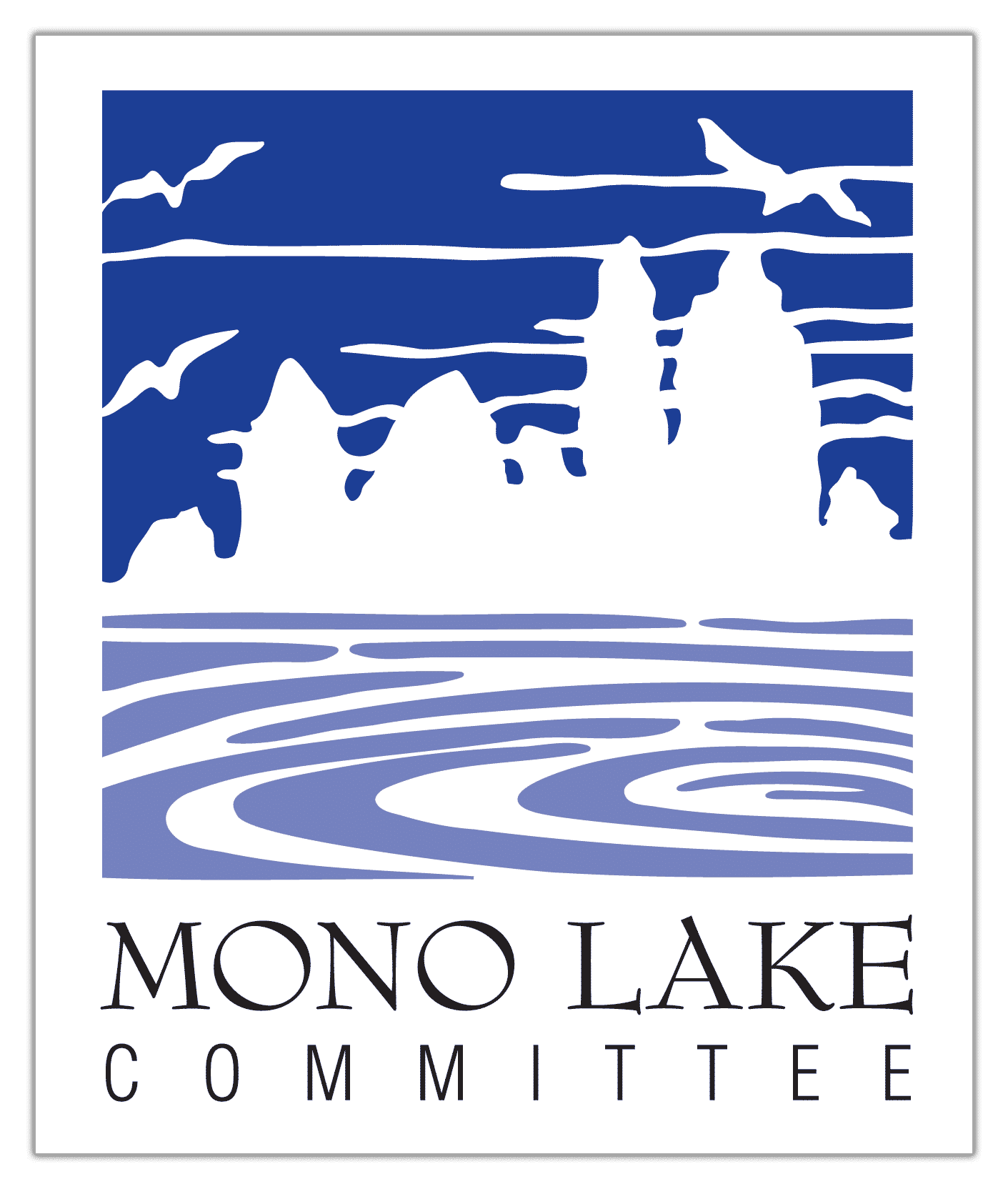
Will Los Angeles choose to use it?
The Mono Lake Committee is actively preparing for the upcoming California State Water Resources Control Board hearing in 2025 about Mono Lake’s low level, its unfulfilled protection mandate, and modifying the Los Angeles Department of Water & Power’s (DWP) stream diversions to achieve implementation. The work includes a wide range of activities, such as staff research, working with expert witnesses, running hydrologic models, talking with allies, and preparing legal presentations.
The Committee’s position is straightforward: In 1994 the State Water Board required that a sustainable 6,392-foot management level for Mono Lake be achieved by approximately 2014. That hasn’t happened, so water diversion changes are necessary to put implementation back on track.
Those facts are clear, so the question often arises: What position and arguments will DWP present?
While DWP hasn’t produced any written hearing submissions yet, a number of things indicate DWP attorneys are preparing an aggressive strategy to ignore the 6,392-foot mandate, claim Mono Lake’s impaired condition is just fine, and argue for no changes to water diversions.

DWP is investing a large amount of money in hearing preparation. Several years ago, DWP hired outside counsel at a prestigious Sacramento law firm to represent it on an undisclosed budget, indicating its intent to heavily engage in the hearing.
More recently, DWP authorized $960,000 in 2023, which it said in budget documents was for gathering “valuable insights that will improve the hydrogeologic model of Mono Lake, which is vital for preparation for the State Water Resources Control Board hearing pertaining to LADWP’s water rights license.” That work involved an intensive aerial survey with a low-flying helicopter towing a large hexagonal frame 100 feet above the ground to electromagnetically map groundwater resources. The flights, which generated substantial local attention and concern, produced data that has neither been discussed nor shared.
DWP is also investing in conducting its own parallel studies, most likely with the intent to argue that long-established Mono Lake issues like air quality and ecological productivity aren’t a concern.
In 2024 DWP obtained permits from the Bureau of Land Management to “install, operate, and maintain meteorological and particulate matter monitoring equipment” at two sites on federal land east of Mono Lake. However, there’s already a long-running and well-established dust monitoring program conducted by the Great Basin Unified Air Pollution Control District, the legal authority implementing the Clean Air Act. DWP’s investment appears to be intended to dispute Great Basin’s conclusions about toxic dust that blows off the exposed bed of Mono Lake—dusty alkali flats that will be underwater when the lake reaches the 6,392-foot mark.
DWP also contracted an outside firm to conduct studies on Mono Lake’s alkali fly population. We’ve seen the boats, extensive equipment, and divers working at the lake, but DWP is holding the project close to the vest. The relationship between lake level, salinity, and impairment of alkali fly productivity was well-established by the State Water Board, informing the 6,392-foot mandate. DWP presumably plans to use the data it gathers to argue against that record and in favor of lower Mono Lake levels—just as it did, unsuccessfully, at the original State Water Board hearing.
The studies support a theme that DWP launched in arguments presented at the State Water Board’s public workshop in February 2023. For that event thousands of Mono Lake supporters from Los Angeles, the Eastern Sierra, and around the state and country commented in favor of lake protection. DWP, however, argued against the science-based conclusions of the State Water Board in the Mono Lake decision, asserting that nesting California Gulls are better off at low lake levels. DWP even issued a press release that ignored the evidence and alleged the Committee “has made false claims that nesting gulls on Negit Island in Mono Lake are at risk of coyote predation.”
It’s not surprising that DWP is preparing for the State Water Board hearing. However, the positions DWP appears to be preparing are confrontational, counter to established science, and a departure from the long-established policy of the City of Los Angeles.
In 1994, city leaders including the mayor, City Council, and DWP leadership joined with the Committee and other parties to announce their full acceptance of the State Water Board’s famous Mono Lake water rights decision. It’s a legendary agreement that the City Council recognized and reaffirmed just last fall in a resolution establishing September 28 as Mono Lake Day and declaring, “the Los Angeles City Council hereby remains steadfast in its commitment to Mono Lake and its tributaries as a part of the City’s sustainable water future.”
So, will DWP actually present formal arguments against Mono Lake’s protection and attempt to undermine the State Water Board’s requirements for sustainable Mono Lake management? It’s up to the leadership of Los Angeles to decide. Citizens and elected leaders have shown a clear commitment to healing the damage done by past DWP water diversions. However, DWP attorneys, if given the latitude, are likely to forcefully argue in favor of leaving the present-day low lake crisis unchanged, unresolved, and unsustainable for Mono Lake.
This post was also published as an article in the Winter & Spring 2025 Mono Lake Newsletter. Top photo by Bartshe Miller.
